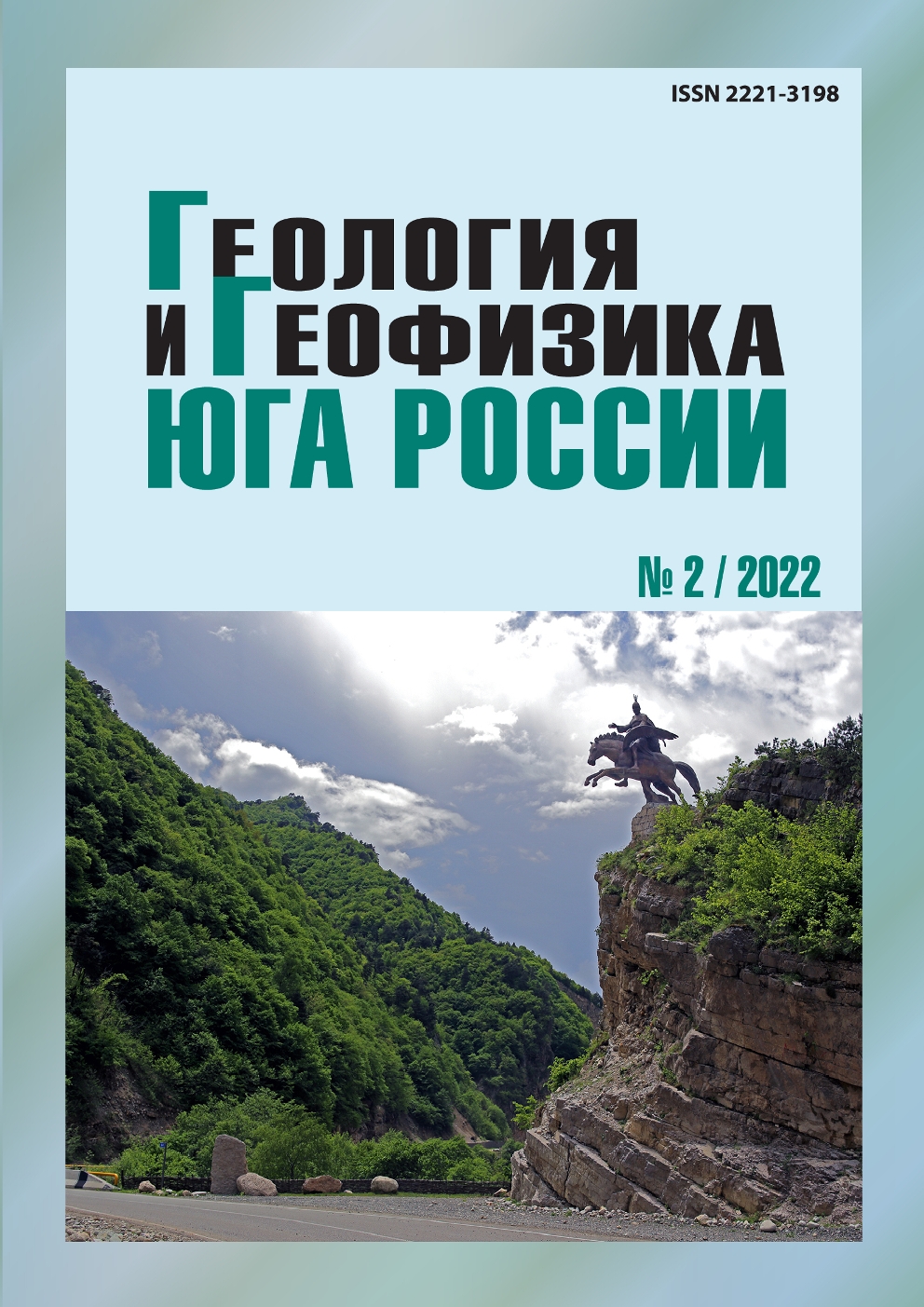Studying the dynamics of the crack width of a potentially collapsing rock massif with a string sensor on Mount Gunib (Dagestan)
Abstract
Relevance. The study of landslide geological processes in the Caucasus is an important problem of ensuring the safety of high-altitude settlements. Various methods are used for this: aerospace, paleogeographic, geomorphological, etc. A separate point is the issue of geophysical monitoring of unstable massifs in the locations of settlements, power lines and other objects of national economic importance. Therefore, the aim of the work is to study the dynamics of the crack width associated with the unstable state of the rock massif, which poses a danger of collapse on the settlement of Gunib with coordinates 42.40° S.W., 46.94° V.D. This massif is a vertical block measuring 20х50х60 m, separated from the main part of the mountain. At the top of the array, the width of the crack between the whole and the detached block is about 2 m. A new method of instrumental measurement of the crack width was used for geophysical monitoring. The development consists of a linear length change sensor with a dial recorder, a tungsten wire fixed at opposite ends of a crack in the separation of an unstable rock mass from a solid part. The advantage of this tool, in comparison with electronic devices, is the absence of a power source, zero drift, and simplicity of design. This installation can be recommended for practical use. Results. On the basis of monitoring, the dynamics of changes in the width of a crack in a rock massif over a year and a half has been studied. The dependence of the crack width on the seasonal annual atmospheric temperature with a negative correlation coefficient of 0.78 has been established. The maximum amplitude of the crack width change over the seasonal period of 365 days from 08/18/2020 to 08/18/2021 was 4570 microns. It is established that atmospheric precipitation does not have a direct effect on the deformation process of the rock mass. However, the possibility of their influence after some time, which is necessary for rainwater to seep into the base of the studied massif, is not excluded. Moistening of the layer of clay rocks underlying the limestone strata can lead to deformation of clays, resulting in possible subsidence of the massif or movement in the direction of the slope of the formation towards the cliff. The reversible nature of the change in the crack width over the annual observation period, as well as the absence of a trend in a number of measurement data for the entire observation period, suggests that the rock mass at this stage does not experience dynamics associated with a slope towards its expected fall. However, in some periods, the graph shows abrupt changes of a large amplitude of 1500-2500 microns, the nature of which remains to be determined. This implies further research, for example, tilt and seismometric.


